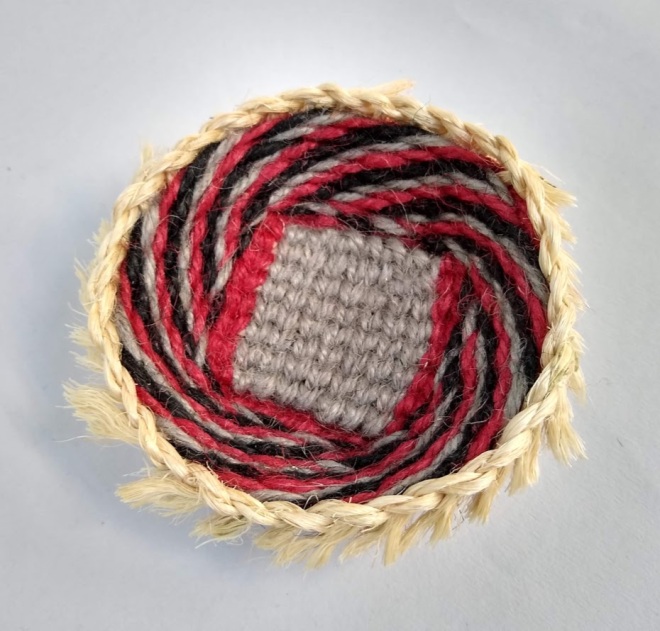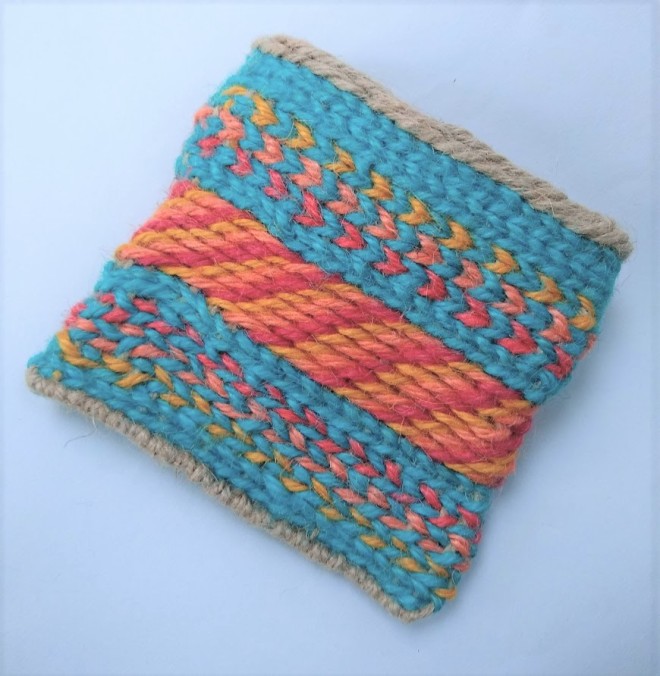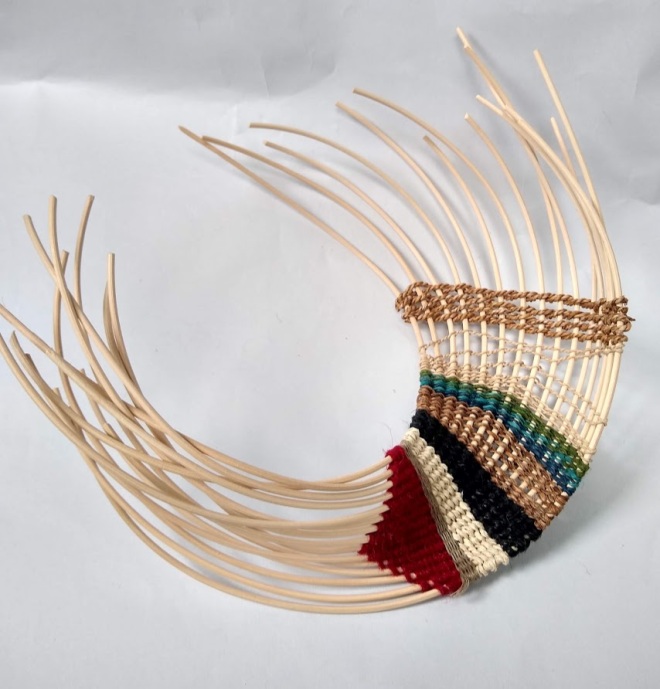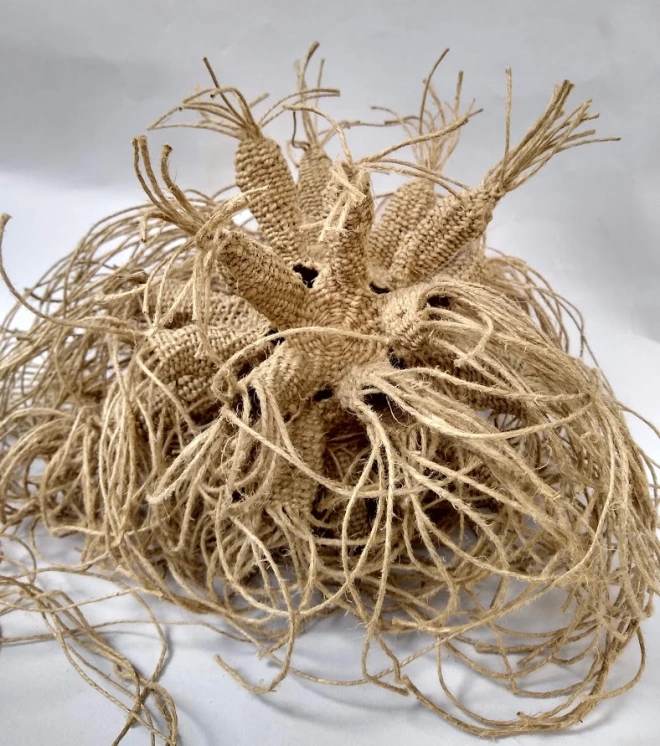It definitely feels as if spring has sprung. The weather has turned (for now), the garden is a riot of green, and I’m back at college. There does seem to be a sense of hope and renewal in the air – let’s hope it lasts!
Our first sessions back at City Lit are focusing on twining with John Page. We started off using sisal and jute, getting a feel for tension, increasing and decreasing the width, and use of colour.

We also looked at an alternative start, the square start, which results in a double-layered base, which can be two different colours. I combined this with waling in three colours, ending up with a bowl where the inside is completely different from the outside.


I also had a go at making a bowl in my signature pattern from discarded telephone wire, begged from phone engineers whenever I pass a junction box.

We then moved on to making pouches, where we learned about the tendency for flat pieces to twist, and the importance of using reverse twining to help counter this. It produces a chevron pattern, which adds extra interest.

I also attempted to make a ribbed pouch, by using alternating thick and thin stakes and thick and thin weavers. My hope was that the thin weaver in front of the thin stakes would recede, while the thick weaver in front of the thick stakes would protrude, giving a ribbed effect.
However, this didn’t work out, partly because the last stake on one side is the same thickness as the first stake on the other side, so while the thin weaver will be in front of the thin stake on one side, it will be in front of the thick weaver on the other side! It’s not very obvious from the photos, so you’ll have to take my word for it. However, it does give the stakes more prominence in the overall pattern.


So far we had worked with soft materials. For homework we were asked to make a sample of twining materials on rigid stakes. Nobody said it had to be flat and straight. 😉
I had some cane that was coiled up, so it was curved. I cut out a series of C shapes and twined them together roughly in the centre. I decided not to use reverse twining to see if I could get the piece to twist. And it worked!



Time to try some openwork twining. One of the handouts we were given had various diagrams showing different types of staggered twining, including one over a double warp (“staggered weft twining over double transposed warp” was the actual description). Nothing like jumping in at the deep end, so I had a go.
First I tried a flat piece, which worked fine – once I remembered to keep the warps in the same layers and not to cross warp threads of the same colour.

Then I tried a piece in the round, but I couldn’t get the pattern to work continuously. You can’t see it in the photo below, but the pattern along the edge where the rounds joined is a complete mess. It wasn’t until I gave up and looked more closely that I realised that I needed an odd number of each colour of warp threads – d’oh! When I pulled out one of each thread the pattern did indeed work – though I then had too many twined threads.

So I had another go, this time with odd numbers of warp threads – and it worked. I finished off by twining around the warps from both sides at the bottom to create a pouch. Apologies for the photo – it’s tricky to shoot a two-sided see-through object.

And after all this, I’ve also made progress on the twined Work in Progress I showed you last month. Hopefully by next month it will be finished!


Busy, busy.
Leave your twisted ‘c’ canes & the last twined jute.